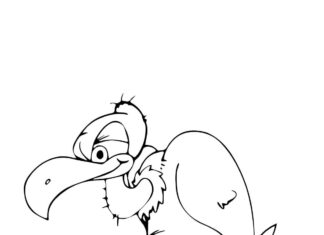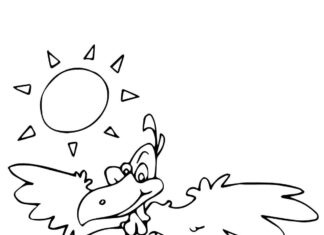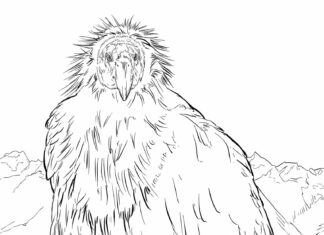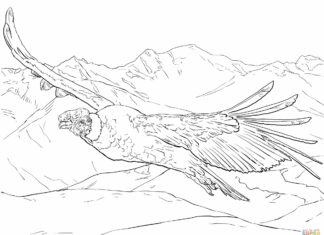Condors are a large family of carrion-eating birds of the order Vulture (Cathartiformes). They are birds characterized by their large size, adapted to feeding on carrion. Many condor species are endangered and protected.
Condor Coloring Pages
information
- Size and design: Condors are among the largest flying birds in the world. They have long necks and wings, and their wingspan can reach more than 3 meters. Their heads are often devoid of feathers or have only minor plumage.
- Food: Condors are carrion-eating birds. They feed on dead animals, and their sharp eyesight helps them find carrion over a wide area.
- Ecology and distribution: Condors are found primarily in the Americas. South America is home to Andean condors, while North America is home to California condors. They usually inhabit mountainous and highland areas.
- Ecological role: Although scavengers, condors play an important role in the ecosystem. Their foraging on carrion helps remove dead animals from the environment, which can reduce the risk of spreading disease.
- Threats: Many condor species are endangered, often due to habitat loss, hunting, pollution and other factors. California condors were on the verge of extinction, but have been saved through conservation and reintroduction programs.
- Security Programs: Because of the threats, many countries and organizations are conducting condor conservation programs. These programs include population monitoring, reintroduction to wild habitats and educating the public about the importance of these birds.
- Cultural symbolism: In some cultures, condors are considered symbols of strength, freedom and wisdom. In South America, they are sometimes important figures in legends and myths.
- Situation of California condors: California condors are among the best-known condors and were close to extinction in the 1980s. Thanks to an elaborate captive breeding program and reintroduction to wild habitats, their population has increased, though it still needs strict protection.
- Captive breeding: Many condors, especially endangered ones, are bred in captivity as part of conservation programs. These programs help preserve populations and the species' ability to survive.
trivia
- Largest wings: The California condor (Gymnogyps californianus) has the largest wingspan of all flying birds. It can be even more than 3 meters, which allows the condor to effectively use air currents during flight.
- White feathers on the neck: Andean condors, such as the Andean condor (Vultur gryphus), have distinctive white feathers on their necks, which create an impressive contrast with their dark body plumage.
- Longevity: Condors can live quite long in the wild. Some sources indicate that California condors can live up to more than 60 years, and Andean condors up to about 70 years.
- Not a very good flight: Despite their impressive size, condors are not the best flyers. Their heavy build makes their flight rather planned, relying on the use of thermal currents.
- Sense of smell: Condors are known for their exceptionally strong sense of smell, which helps them detect carrion over considerable distances. Their noses are adapted to sense the odors of putrid carrion.
- Females larger than males: In most condor species, females are slightly larger than males. This is a trait called sexual dimorphism, which is quite common among birds.
- Condors vs. Incas: In the culture of the ancient Incas in South America, condors played an important symbolic role. They were considered spiritual beings and were often depicted in art and beliefs.
- Reintroduction of California condors: The California condor reintroduction program has been one of the most successful cases of endangered species conservation. Thanks to the efforts of scientists and conservationists, the population of these birds has grown from just a few individuals to more than 400 by 2021.
- Mainly scavengers: Although condors are primarily scavengers, their diet can also include live prey such as insects or small vertebrates, especially in the case of young birds.
- Wound treatment: In some cultures, condor feathers were believed to have healing properties, especially for wounds and cuts. In fact, the feathers were used by some communities as an indication of the possibility of carrion in the area.




